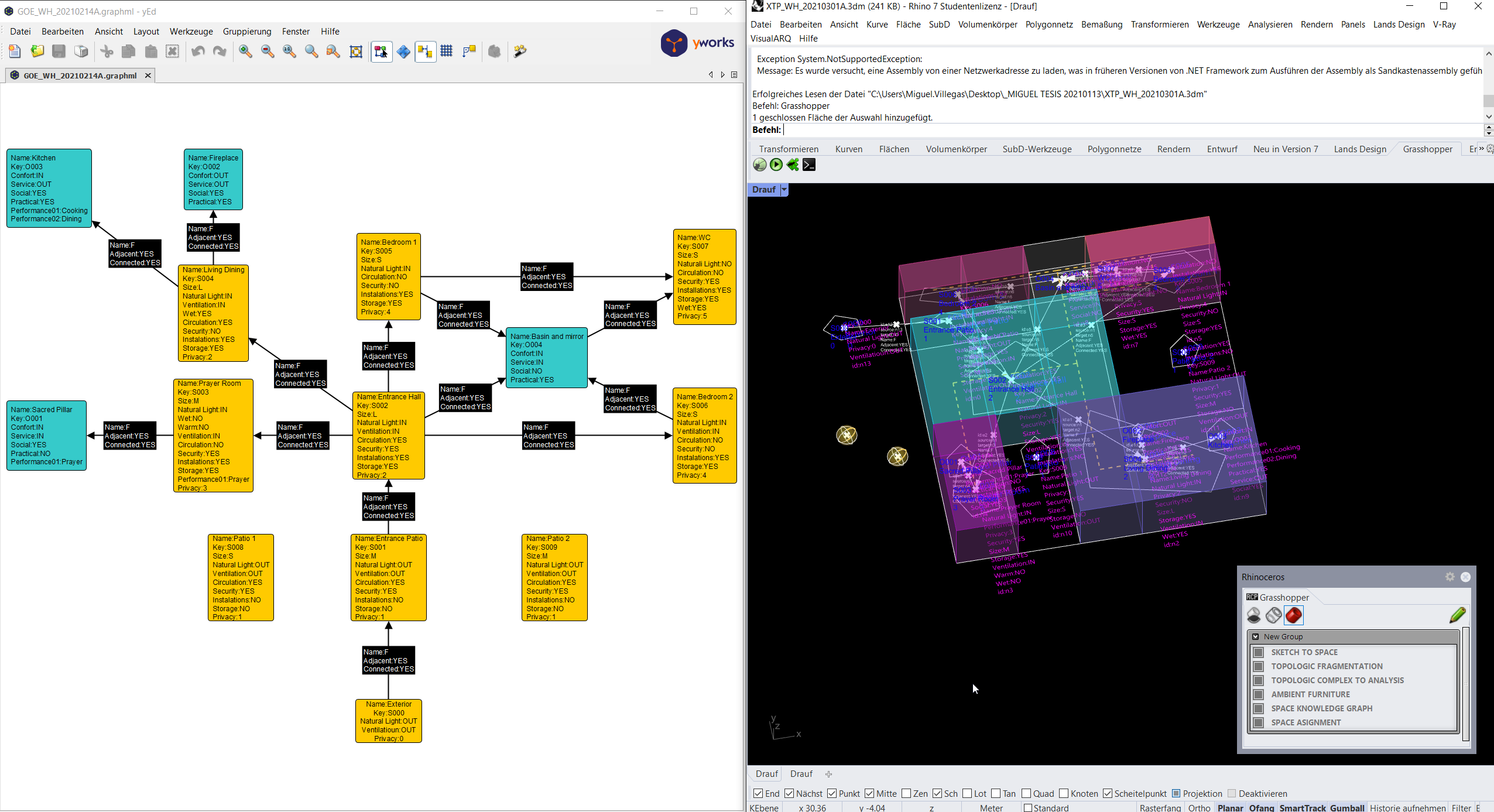Graph (ontology) editor
Protege is an open source Graph (Ontology) editor. https://protege.stanford.edu/
owlIFC is the future of IFC, it is said. so Protege should be a tool to be learned?
yEd (yWorks.com) used to be opensource (if I remember well), it is still free to used..but it is only an editor for what looks like graphs. (node editor, without 'intelligence'?)



Comments
is JSON-LD the language for it? see schema.org
is ifc the file format for the ifc-ontology?
getting lost :-)
what about spark and GraphX
https://spark.apache.org/docs/latest/graphx-programming-guide.html
I'm confused @lukas can you give me some background information so I know what you're talking about`?
If you're interested in the basics this
https://enterprise-knowledge.com/whats-the-difference-between-an-ontology-and-a-knowledge-graph/
Is for example a nice explanation. I guess lukas is looking for a tool designed for this kind of work with data. (The Ifc definition is for example an ontology, an ifc file could be understood in a form of a graph. It's just a way of looking at data.)
Thanks @JanF. Yes, and what would be the file that describes the ifc ontology? And then what displays it, probably looks like a big tree.
And is a manipulating of a such a tree, already a kind of architectural work ? before drawing anything (geometries) one can already have a building concept. How is a mixing of 'trees' possible: the basic-ifc-tree multiplied by a topologic-tree.
Or assigning a partial-ifc-tree to some topologic-dictionary? (refining the IFC with more data, at the end comes the geometry data, and a building representation is finally achieved.... further refining will put the MEP, or the materials, the lighting..)
what are the tools for such graph manipulations? BlenderBIM combined to blender/freecad is the tool for the 'end' representation. But before? A database, with GraphQL manipulation, a Graph viewer like ?
getting clearer, little by little.
Very interesting discussion @lukas and I think it's right that it's separated from the topic on @topologic

I feel a little like an "unworthy" on the forum because I'm working with propietary tools and haven't open sourced my research (yet).
To sum up, I've been working with yEd knowledge graphs (just because they are amazingly easy to sketch) and by brute forcing Key-Value pairs for qualifying the nodes and the edges just by "writing down" the content in the nodes (I think they have customizable ontological properties).
The thing then is that I "parsed" the resulting XML from yEd in Grasshopper and used the extracted information to build a topologic structure.
Now I´m developing a "construct" that reads the knowledge graph I built based on the Weekend House by Nishizawa and "assigns" the embeded knowledge to a @topologic system I built from a set of just 4 curves.
What still eludes me (would be very thankful for any hint) is how to multiply two graphs. My intuition tells me I have to operate with the graph extracted from the sketched structure and the knowledge graph but I have no clue as to how...
what is https://github.com/lewismc/IFC-to-RDF-converter ?
found GraphViz and https://github.com/ArsMasiuk/qvge which is start for an opensource yEd..
but also app.diagrams.net which is very similar to yEd
the file format is still a question? ifc, step, express, ifcowl, rdf, rdd (spark),dot (graphviz),gexf,graphML,Turtle,JSON-LD ....and so on..
and probably these are interchangeable file, like with the tool on the first line.
So one could start conceptual work with one of those graph format. and little by little, with the input of information, one would end with an ifc that represents the digital twin of a construction. ? but then an RDF to IFC tool is needed ?
For me, and I know I´m working against the trend, is working with LPG (labelled property graphs) instead of ontology or rdf based systems which I feel are much more a constraint than a framework. The file format... for me the advantage of the XML is that it is "easily parseable". Then comes the construction of the IFC entity geometry which for me is really handiccaped in most of the "conventional" platforms...
@arquitextonica did you see diagrams.net? would that be an open-source yEd replacement. https://community.osarch.org/discussion/131/talk-on-topologic/p14
and
https://community.osarch.org/discussion/160/5d-blenderbim-a-tool-for-quantity-surveyors-or-cost-engineers#latest
Like that combination of XML/yED-or-diagrams with Topologic would be the schema.org/protege alternative for AEC? since Topologic of @topologic can do the graph stuff but also the geometry afterwards when the schematas/graphs are done.
https://janusgraph.org/
is the database for saving and building graphs.. is it?
one building is one ifc graph = one databse.. or is this too much of an effort for one building? (in fact a multi-graph, one for geometries, one for electrical connections, one for static constraints, one for air conditioners (cfd), one for light, one for energy...)
can this database grow to be a village? is ifc able to contain a whole country?
https://www.cms.bgu.tum.de/de/forschung/projekte/17-research-projects/199-dfg-earlybim2
project for manipulating Graphs.. apllied to IFC ?